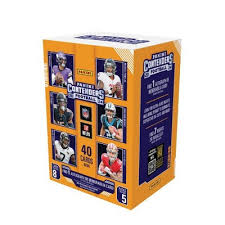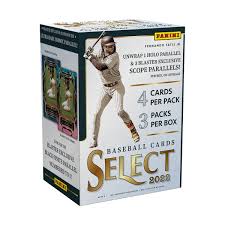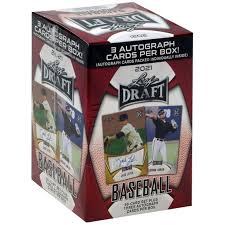

During the height of the pandemic, it became clear that the value of sports cards was rising to unprecedented heights. Since then the process has slowed down and even receded. It is therefore time to answer the question: has the sports card bubble burst?
One of the main effects of the massive COVID-19 era boom was the precipitous rise of the value of base cards. Base card rookies in particular skyrocketed. The highest increase was seen in graded base cards, particularly those receiving a PSA 10.
The causes of the boom are well-known. Stimulus money and a good deal of extra time got old collectors and a slew of newbies interested in collecting.
The base card boom sounds like the name of a great 90s British techno-pop duo. However, it is also a very real phenomenon.
One of the hallmarks of the card explosion was the high rate of grading. New collectors just loved getting PSA 10s and were willing to pay a premium.
With a bustling market, everyone sent their gem-looking rookies into PSA. It was an easy way to make a substantial profit on a cheap card obtained from retail products.
Hit with an overwhelming number of orders, PSA and BGS were relatively slow to grade the cards. In addition, most of the base was not sent in express (they are common cards, after all), and therefore, the population remained relatively low for a good period of time. Therefore, prices remained high for base cards, and people got used to buying them for unreasonably high amounts.

Bubble era rookies have a ton of graded base (look for Bo Bichette PSA 10s on eBay)
One of the reasons for the high prices of the graded base was the relative scarcity of the cards. For example, when the first Zion Williamson Silver Prizms came out, people eagerly anticipated the first PSA 10s.
But we all know what happened next. First, the market was saturated with base cards. Then, as expected, the laws of supply and demand meant that the price soon went down.
But the problem didn’t stop there. The massive sports card boom ended as stimulus money ran out, and many people returned to their jobs. With the delta wave of the pandemic abating and many countries opening their doors, many are using their hard-earned funds to plan family vacations. As much as we love pieces of cardboard, who can blame them?
In addition, PSA and BGS raised their prices significantly and lowered the profit margin from grading any card. But it made the grading of base cards particularly unprofitable.
In recent months, eBay has realized that there is more money in graded cards. Therefore, their algorithm seems to push PSA 10s at the expense of raw cards and lower grades. This change has made graded cards and their sale even more prevalent.
Finally, PSA and BGS caught up on their massive submission backlog. Thousands of base cards were returned to their owners with shiny 10 grades.
As a result, prices for everything went down, though it didn’t crash as some prophets of doom had predicted. Instead, the supply surplus gradually lowered the price of graded and raw cards alike. Thus, economists would call what is happening in the marketplace right now a “correction.” That is a rapid change in the value of an asset to reflect its actual value better.
Let’s crunch the numbers on this. Here are some PSA 10 rookie cards with representative numbers before, during, and after the boom.
| Card | Before Boom (2019) | During Boom (mid to late 2020) | Now (November 2021) |
| Zion Williamson Prizm RC | $335 | $940 | $307 |
| Kawhi Leonard Base Prizm RC | $300 | $2,600 | $990 |
| Mike Trout Topps Update RC | $885 | $4,450 | $2,700 |
| Carlos Correa Topps Update RC | $14.50 | $76 | $60 |
| Patrick Mahomes Donruss RC | $159 | $2,126 | $1,035 |
| Tom Brady Bowman RC | $1,099 | $15,600 | $9,000 |
There is a clear pattern in all these cards. They all were at a lower price before the boom, shot up several times higher during 2020 (anywhere from 3 to 15 times higher), and then lost roughly half of the gains after the correction. The sport doesn’t matter much, and the dynamic is the same for young players and established superstars.
Well, there is one outlier. The Zion Williamson cards are not lower than before the boom. But that is because of the injury and concerns over the phenoms weight. He should probably be ok, but I digress.
But what about the higher-end cards? Have they also changed that dramatically?
It’s a bit harder to measure massively high-end cards, like RPA’s, because there are few of them, and units are not comparable. So we went a bit below that to measure value.
| Card | Before Boom (2019) | During Boom (mid to late 2020) | Now (November 2021) |
| Zion Williamson Prizm Purple Wave RC | $875 | $3,299 | $2,275 |
| Kawhi Leonard Prizm RC | $3,600 | $15,100 | $12,400 |
| Mike Trout Topps Update Diamond Anniversary RC | $4,920 | $13,545 | $12,100 |
| Carlos Correa Topps Chrome Refractor RC | $115 | $117 | $152 |
| Patrick Mahomes Blue Wave Prizm RC | $2,650 | $9,700 | $10,799 |
| Tom Brady SP Authentic RC | $20,200 | $50,400 | $34,801 |
We can see here that the general trend for most cards is similar to the base. However, there are some stark differences. The landing after the bubble was far softer for most of these cards. None of them lost half of their value. Indeed, in two cases, the value actually increased somewhat.

The Zion Williamson Prizm Purple Wave RC holds value better than its base equivalent (get one on eBay)
There is no doubt that cards with more scarcity maintain their value far better than base cards.
The laws of economics always catch up. Collectors have learned from the bubble and are now more sophisticated. Most people in the hobby now understand (some obviously knew all along) that scarcity is the name of the game.
Therefore, we have seen an increased focus on more unique cards. Parallels, numbered cards, autos, and jersey cards are the play right now.
We learned a few things from crunching the numbers. Perhaps the most important is that there is no unified “market” as such. Instead, think of the real estate market. Sometimes, when houses for sale go down, rental prices may go up and vice versa.
Similarly, there is a high-end wax market and a low-end wax market. There is a market for base cards and another for autos. Vintage has its own rules. They are all related, but when one crashes, some of the others may not.
Recounting the past is the easy part. After all, hindsight is always 20/20. But if we break out our trusty crystal balls, we can use this info to extrapolate some likely future trends.
The retail craze isn’t quite over, but collectors are clearly gravitating towards hobby again. If you go to Walmart, it is no longer uncommon to see wax sitting on the shelves. Sure, the Prizms and Optic are picked up quickly. But many collectors are reporting that Topps products, Score and Prestige, live comfortably in the stores and put down roots.
The reasons are apparent. Since the base cards are worth quite a bit less, there is a premium on big hits. Since hobby boxes often guarantee a few hits, they are better investments than they used to be.
We don’t expect retail to be as plentiful as it once was. After all, retail can provide massive hits for a discount price. But the reduced value of base, and the significant number of retail wax products sitting in flippers’ homes, lower the appeal considerably. Indeed, many have wondered if we are in the midst of a junk wax era. Nonetheless, the scale has been indelibly tipped towards hobby boxes. As a result, I’m also finding myself biting the bullet and getting hobby boxes over retail, even when the latter is reasonably priced.
The days of an overwhelming supply of PSA 10s are over. The costs of getting cards graded are too high for most base cards, especially with the risk that a card won’t gem! Therefore, we can expect far fewer PSA 10s of post-boom base cards and boom-era base counts to remain relatively stable.
Paradoxically, the lower desirability of base cards will ultimately push up the prices of graded base rookie cards. But that will only apply for those cards that have NOT been massively over-graded. So while a Joe Burrow or Zion Williamson base is unlikely to bounce back, a Mac Jones or Cade Cunningham PSA 10 may offer a decent return on investment.

Hobby boxes are likely to hold value better than retail (get 2018-2019 Prizm hobby boxes on eBay)
While base cards have taken a hit, high-end items do not seem close to returning to pre-pandemic levels. However, comparing just about anything to 2019 prices reveals that the rising tide of the boom has lifted all boats.
So while it is tempting to say that sports cards are going back to being a collectors world, that isn’t accurate. There is still plenty of money to be made by investing in scarce cards before their value explodes. However, investors will have to be more selective and pick their spots carefully. In addition, it may take a higher buy-in to get those profits. However, the money is still there for the taking.
This may be an unpopular opinion, but I welcome the changes in pricing. With wax and base going down, set completists and kids getting into the hobby will be able to afford the sets intended for their consumption.
The popularity of hobby boxes and high-end cards means that local cards stores have a better chance of survival than they did pre-boom.
Meanwhile, the continued high prices of the big-ticket items ensure that the big players continue to pump money into the hobby. That means that the hobby is deeply segmented between the rich and the rest of us. However, it means the sports card community is set to maintain its diversity and vitality.
🚨 BREAKING: $400M sports card and memorabilia scam busted. Dead body found.
What you need to know about Cal Raleigh 👀
Top 5 Sports Card Athletes to invest in RIGHT NOW (big ROI potential!)
 0:58
0:58
The best small town card shop? 👀
Sports Card Scavenger Hunt! (5,000 Subscriber Special!)
I hit a SWEET auto from the #1 overall pick at PCB hobby
The Ultimate 2024 Football Card Brand Tier List (Panini vs. Topps and more!)
2025 Topps All Star Game Mega Box Product Review








2022 Topps Heritage Baseball Blaster Box Configuration: 7 Packs per Box – 9 Cards per Box. Plus 1 extra pack.








Keep up on breaking Sports Card News, our latest articles, product specials and exclusive content with expert analysis of hobby trends.

© Copyright 2025 - All rights reserved Cardlines.com / Media Techs LLC - Sports Card News, Reviews, Releases and BREAKS - #thehobby.
Important: When you click on links to various merchants on this site and make a purchase, this can result in this site earning a commission. Affiliate programs and affiliations include, but are not limited to, the eBay Partner Network.
Everything you should know about the 2025 National (plus more!)
Cardlines 9 hours ago